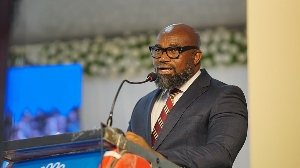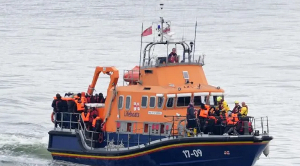- Home - News
- TWI News | TV
- Polls
- Year In Review
- News Archive
- Crime & Punishment
- Politics
- Regional
- Editorial
- Health
- Ghanaians Abroad
- Tabloid
- Africa
- Religion
- Election 2020
- Coronavirus
- News Videos | TV
- Photo Archives
- News Headlines
- Press Release
General News of Monday, 6 February 1995
Source: THE STATESMAN
No Fufu In Kumasi: Sieme Preko tops all
Kumasi, the nation's second largest city, last Thursday [25th May 1995] hosted the single ever congregation of Ghanaians. A mammoth crowd, estimated at more than 500,000, choked the streets of the garden City for "Siemepreko", the Kumasi version of "Kumepreko".
The march started and ended peacefully thanks to the absence of officially sanctioned thuggery. And peaceful it was what it was planned to be.
Long before the march, the over 20,000 strong corps of mechanics and artisans at Suame Magazine had served notice that it was prepared to confront any group whose intention was to prevent Kumasi citizens from exercising their constitutional right to demonstrate. Such a nasty situation was averted when leaders of the Alliance for Change rushed to Magazine to talk to a group of artisans who had decided to march on the instigators of the so-called Ashanti Resistance for Peace, who had for the past two weeks been attempting without success, to recruit thugs to disrupt the march. The AFC leadership persuaded them of the necessity for a peaceful march. Suame Magazine was Jerry Rawling's darling spot in the hey days of the revolution.
On hand to cover the historic event were foreign television networks like CNN, BBC, Associated Press TV and other broadcasting organisations. Ghana's state owned GBC TV arrived almost at the tail end of the march.
Commercial activities in Kumasi came to a standstill as all shops, schools and even banks closed for the day. Not even the traditional chop bars opened; they had all closed shop in solidarity with the march.
Groups of agitated youth took to the streets and started warming up for the event as early as 7am. By 9 am, the entire area of Kejetia had been taken over by more than 150,000 people, ready for the march. There was considerable security presence, with police efficiently directing and controlling the growing crowd.
Led by leaders of the Alliance for change, the march took from Kejetia at 11 am and immediately split into two fronts, moving along both sides of the railway station and meeting at Asafo Market.
Competing for notice in the sea of placards were some of the longest statements: "Remove the speck of violence in Ghana before you attempt peace in Liberia", "The blood of the martyrs shall be upon Rawlings, Nana Konadu and their cohorts", to short ones like "J.J. - Bastard Pikin", "Control loose arms" and "Bastard President, Bastard Ideas". One placard reminded Jerry Rawlings "Rawlings, as you killed three ex-heads of state and five other officers, so will you die, even worse".
Amid drumming, dancing and singing of songs like the now familiar "Yempe ashawo ba" (we want no son of a prostitute), the huge crowd made its way through Asafo Market roundabout, by the Labour Office roundabout, Jackson's Park, Roman Hill and Central Market and ended where it began at Kejetia.
Here, some executive members of the Alliance for Change addressed the biggest rally ever held in Ghana.
The march officially ended at 12 noon. But several groups of happy young men and women remained in the streets for a long time thereafter, until they were persuaded to leave. "We are saturating the entire city with our message", was the argument of one such group. Others insisted that the whole day had been set aside for the march and they intended to use it to the full. A third group carrying a miniature coffin of Jerry Rawlings insisted on conducting a full day's funeral before "burial" at dusk.
"Siemepreko" in Kumasi was one spontaneous outburst of protest involving virtually all the inhabitants of the Garden City. Those who could not physically take part cheered along the route from balconies, while others provided iced water, and in some cases soft drinks, for the marchers.
The writing, without doubt, is clearly on the wall for those who can read.










